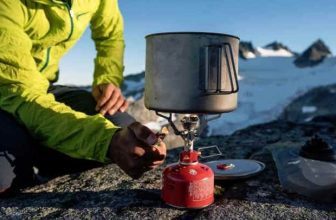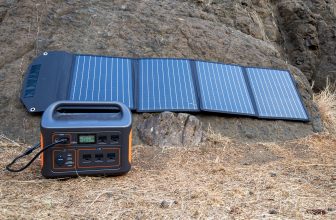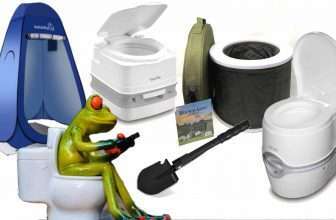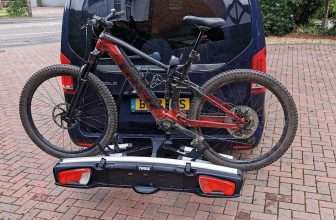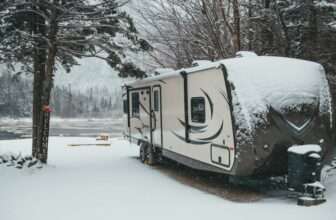What You Need to Know About Caravan Brakes: A Beginner’s Survival Guide

An important part of a touring caravan to consider is the braking system – understanding how your brakes work and how to test them ensures smooth journeys and prevents accidents.
This beginner’s guide will delve into caravan brakes, demystifying complex concepts in easy-to-understand terms. From over-run brakes to breakaway cables, we’ll cover everything you need to know about this essential safety feature.
Key Takeaways
- Caravans in the UK use over-run brakes, which activate when the tow vehicle slows down or stops and are required for all caravans rated above 750kg weight capacity.
- Understanding how over-run brakes work and regularly inspecting and maintaining them is crucial for safe towing.
- Breakaway cables are a vital safety component that should be correctly installed to automatically apply caravan brakes if it accidentally detaches from its tow vehicle while traveling.
- Essential parts of caravan braking systems include brake shoes and brake drums; regular inspection and replacement of these components will ensure optimal braking performance.

Contents
ToggleUnderstanding Caravan Brakes
Caravans in the UK use over-run brakes, a type of braking system that activates when the tow vehicle slows down or stops, and is required for all caravans and trailers rated above 750kg weight capacity.
What Kind Of Brakes Are Used For UK Caravans?
In the United Kingdom, most caravans have an ‘over-run’ braking system specifically tailored for safe towing. This system ensures reliable and smooth stopping power when you need it.
The beauty of over-run braking systems lies in their simplicity and efficiency while on the road. As your tow car slows down, the caravan’s momentum presses against the sprung draw-bar, activating the caravan’s brakes automatically.
Understanding The Function Of Overrun Brakes
Over-run brakes play a crucial role in ensuring the safety of campers towing caravans behind their vehicles. As a camper, it’s essential to understand how these brakes work and why they’re critical.
Over-run brakes automatically apply the caravan’s braking system when you slow down or come to a halt with your tow car.
The critical component of the over-run brake system is the ‘overrun device’, which generates draw-bar force. The device is located inside the hitch lock of the caravan, and uses the forward momentum of the caravan to move a rod which activates the brakes when the tow car slows. To help visualize this process, imagine yourself walking backward with a shopping trolley: when slowing down or stopping abruptly while pulling the trolley, its momentum would cause it to bump into you – this same concept applies to your tow car and caravan.
Incorporating over-run brakes into your towing setup enhances overall safety and provides peace of mind during long journeys or heavy traffic situations where frequent stops may be required.
Furthermore, using additional features like a breakaway cable alongside over-run brakes can mitigate potential dangers if an unlikely detachment between your car and trailer occurs.
What Is The Breakaway Cable?
A caravan breakaway cable is a safety device for towing caravans or trailers. It is designed to activate the brakes on the caravan or trailer if it becomes detached from the towing vehicle while in motion. The breakaway cable connects the towing vehicle and the caravan or trailer’s braking system.
If the caravan or trailer becomes detached from the towing vehicle, the breakaway cable will be pulled taut, activating the brakes and bringing the caravan or trailer to a stop. This helps prevent the runaway of the detached caravan or trailer, reducing the risk of accidents or damage.
According to UK law, all towed vehicles, such as caravans, must have a breakaway cable that adheres to appropriate standards and practices. Ensuring this cable is correctly installed and securely attached is paramount for safeguarding yourself and others on the road.
To provide guidance on proper attachment techniques, The Caravan Club has compiled an invaluable resource detailing best practices for fitting breakaway cables.

How Caravan Brakes Work
Caravan brakes work through the use of brake pads and shoes, which are pressed onto the brake rotors or drums to slow down or stop the trailer when activated by the over-run brake mechanism.
Brake Pads And Shoes, Brake Rotors And Drums
 It’s important to have a basic understanding of how caravan brakes work. One essential component is knowing about the different parts that make up the brake system. Here’s what you need to know about brake shoes and drums:
It’s important to have a basic understanding of how caravan brakes work. One essential component is knowing about the different parts that make up the brake system. Here’s what you need to know about brake shoes and drums:
- Brake shoes: These components press against the brake drum to slow down or stop your caravan. Brake pads are used with disc brakes, while brake shoes are used with drum brakes. They wear over time and will need to be replaced periodically.
- Brake drums: These are cylindrical surfaces that rotate along with your wheels. When you apply your brakes, brake shoes push against them, which creates friction and slows down your caravan. Over time, brake drums can become worn or develop grooves, affecting their performance.
Understanding these components and how they work together can help you better maintain your caravan’s braking system, ensuring you can travel safely on your adventures.
What is a Caravan Handbrake?
The caravan handbrake, or the parking brake or emergency brake, is a mechanical braking system designed to keep the caravan stationary when it is not being towed. It operates independently of the towing vehicle’s braking system. Here’s how the caravan handbrake typically works:
- Lever or Pedal: The handbrake is usually operated by a lever or pedal within the caravan’s interior. It is commonly located near the driver’s seat or on the dashboard.
- Cable or Rod Mechanism: When the handbrake lever or pedal is engaged, it activates a cable or rod mechanism that extends to the caravan’s braking system.
- Brake Shoes or Pads: When engaged, the cable or rod mechanism applies force to the caravan’s brake shoes or pads. These brake shoes or pads press against the inner surface of the brake drum or rotor, creating friction and generating braking force.
- Holding the Caravan: Once the brake shoes or pads are engaged, they prevent the wheels from rotating, effectively holding the caravan in place. This ensures the caravan remains stationary, even on inclines or uneven surfaces.
- Releasing the Handbrake: The lever or pedal is disengaged to release the handbrake, which releases the tension on the cable or rod mechanism. This allows the brake shoes or pads to retract from the drum or rotor, allowing the wheels to rotate freely again.
It’s important to note that the caravan handbrake is not designed to provide the same braking force as the towing vehicle’s brakes while in motion. Its primary purpose is to secure the caravan when parked and prevent it from rolling or moving unintentionally. Regular maintenance and inspection of the handbrake system are essential to ensure its proper functioning and maintain the caravan’s overall safety.

Brake Shoe Inspection And Replacement
A critical aspect of maintaining your caravan brakes is to inspect and replace the brake shoes when needed. Here are some tips to help you with this process:
- Inspect the brake shoes regularly: It’s essential to inspect them regularly so you know when they need replacing. Look for signs of wear, such as cracks or thinning of the lining. If in doubt, it’s always best to get them checked by a professional mechanic.
- Check for dust: Caravan brakes generate a lot of dust, which accumulates on the shoe linings. This dust can cause uneven wear on the brake shoes and reduce their effectiveness. To prevent this, make sure that you clean out any dust from inside the brakes during your maintenance routine.
- Replace when necessary: When you notice significant wear or damage to your caravan brake shoes, it’s recommended that you replace them as soon as possible. It can lead to more expensive repairs down the road.
By following these steps and keeping your caravan brakes well-maintained you can ensure that you’re safe on the road and get maximum performance from your braking system.
Maintenance And Safety Tips
Regular brake inspection and adjustment are crucial for safe towing. Learn how to brake your tow car in an emergency and understand the importance of weight distribution in maintaining optimal braking performance.
Regular Brake Inspection And Adjustment
 As a responsible caravaner, conducting regular maintenance and inspection of your caravan brakes is crucial to ensure safety and proper functioning. Here are some essential tips to help you keep your brakes in good working order:
As a responsible caravaner, conducting regular maintenance and inspection of your caravan brakes is crucial to ensure safety and proper functioning. Here are some essential tips to help you keep your brakes in good working order:
- Inspect the condition of linings regularly for cracks, tears, or wear.
- Check brake fluid levels frequently, ensuring they are between the minimum and maximum marker.
- Clean brake dust inside drums or calipers to prevent corrosion and reduce brake effectiveness.
- Make sure that your brake shoes are adjusted correctly and are secure. This will allow them to spin freely without any rubbing or dragging.
- Adjust brakes when necessary to ensure adequate braking power. A good rule is to have a 50/50 balance between caravan and car brakes.
- Remember that all components will wear out over time, so replacing old parts with new ones is essential.
By following these regular maintenance guidelines for your caravan brakes, you can feel confident on the road, knowing you’re traveling safely.
How To Brake Your Tow Car In An Emergency
If you ever find yourself in an emergency while towing your caravan, knowing how to brake your tow car safely and effectively is crucial. The first step is to avoid slamming on the brakes suddenly, which can cause the tow rope or trailer to jolt and become unstable.
It’s essential always to keep a safe distance from other vehicles when towing, so you’ll have enough time to react appropriately in case of any sudden braking by others.
Additionally, ensure that your handbrake is functioning correctly before embarking on any journey, as this will act as an additional safety measure in case of brake failure.
Importance Of Weight Distribution
One of the essential factors to remember when towing a caravan is weight distribution. Without proper weight distribution, you risk your caravan becoming unstable, making it difficult to control and increasing the likelihood of an accident.
To avoid this, make sure that you distribute your load evenly throughout your vehicle and trailer. A weight distribution hitch can help with this by spreading the weight across your car and the trailer, ensuring they both ride smoothly on the road.
Regularly checking tire pressure and inspecting suspension components can ensure that your load is distributed correctly and minimize any potential risks on the road.
How To Test Caravan Brakes
As a camper, ensuring that your caravan brakes work effectively before embarking on a journey is important. Here’s how to test them:
- Find a safe and level area: Look for a flat and open space where you can safely perform the brake test without any obstacles or traffic nearby.
- Disconnect the breakaway cable: Before testing the drum brakes, ensure the breakaway cable is disconnected from the towing vehicle to prevent the brakes from activating during the test.
- Engage the caravan handbrake: Ensure that the handbrake on the caravan is engaged. This will help keep the caravan stationary during the brake test.
- Gradually apply the towing vehicle brakes: Get into the towing vehicle and slowly apply the brakes. Observe how the caravan responds to the braking force. It should gradually slow down and come to a stop without any pulling or uneven braking.
- Listen for unusual noises: While applying the brakes, listen for any unusual noises such as grinding, squealing, or rubbing. Unusual noises may indicate issues with the brake components that require inspection or maintenance.
- Check for consistent braking: Ensure that all caravan wheels are braking evenly. If you feel uneven braking or pulling to one side, it may indicate an adjustment or maintenance issue with the drum brakes.
- Perform a visual inspection: After the brake test, inspect the drum brakes for any signs of excessive wear, damage, or oil leakage. If you notice any problems, it’s advisable to have a professional inspect and service the brakes.
Remember, regular maintenance of your brakes is crucial for safe and enjoyable travels with your caravan. Be sure to follow manufacturer guidelines for servicing and always prioritize safety when towing on the roads.
Common Brake Issues And Cost Of Service
As a camper, it’s essential to be aware of common caravan brake issues and their associated costs. Regular maintenance can help prevent costly repairs in the future. Here’s an overview of common issues and costs in an easy-to-understand table format:
| Issue | Description | Cost of Service |
|---|---|---|
| Brake Squealing | This is often caused by worn or glazed brake shoes and linings. It can also be due to ALKO brake squeal, which has a specific fix. | Approximately £50-£150, depending on the extent of wear and required replacement parts. |
| Shuddering/Pulsing | This occurs when the brake drum or rotor has an uneven surface, causing vibrations during braking. | £70-£200, depending on whether the drum or rotor needs resurfacing or replacing. |
| Burning Smell | Overheating brakes can lead to a burning smell. This could be due to dragging brakes, worn components, or insufficient brake fluid. | £30-£200, depending on the cause and necessary repairs or replacement parts. |
| Leaking Fluids | Leaking brake fluid is a serious issue that requires immediate attention. Leaks can occur at the master cylinder, wheel cylinders, or brake lines. | £50-£400, depending on the source of the leak and required repairs. |
| Pulling to One Side | This can be caused by uneven brake pressure, worn components, or misaligned wheels. It is important to address this issue for safe towing. | £30-£150, depending on the cause and necessary adjustments or replacement parts. |
Remember, it is crucial to regularly check and maintain the condition of brake linings and clean out brake dust as part of routine brake servicing to avoid these common issues.
Alko Brake Problems And Reversing With Over-run Brakes
Alko brakes are commonly used in caravans and can experience issues when reversing with over-run brakes. One common problem occurs on twin-axle caravans, where the brakes work fine in the forward direction but not in reverse.
Fortunately, this issue can be quickly resolved by adjusting the brake shoes or replacing worn-out parts. Regular maintenance checks of your caravan’s braking system, including inspection and servicing, will ensure your safety while towing your caravan along UK roads.
Conclusion
In conclusion, understanding how caravan brakes work is helpful for a safe and enjoyable experience on the road. Over-run brakes are the most common type used in the UK, and they work by applying the trailer brakes using their kinetic energy.
Regular maintenance and testing of your caravan brakes can prevent costly repairs and ensure you can brake safely in an emergency. Remember to consider weight distribution when towing your caravan, as this plays a significant role in braking performance.
FAQs:
- How do caravan brakes work?
Caravan brakes use either electric or hydraulic systems to slow down the vehicle. The brake system is activated when the driver steps on the brake pedal, which sends a signal to the caravan’s braking mechanism.
- What are the different types of caravan brake systems available?
There are two main types of caravan braking systems: independent and dependent. Independent systems work independently from the towing vehicle, while dependent systems rely on pressure from the towing vehicle’s braking system.
- Why is it important to maintain your caravan brakes?
Maintaining your caravan brakes is essential for ensuring safe driving conditions and avoiding accidents. Regular maintenance can also help prolong their lifespan while preventing costly repairs in the future.
- Do I need a special license to tow a caravan with its own braking system installed?
In most cases, you won’t require any additional licenses beyond those necessary for driving your towing vehicle. However, it’s always best to check local regulations and laws before hitting the road with your caravan in tow.
